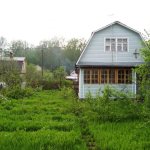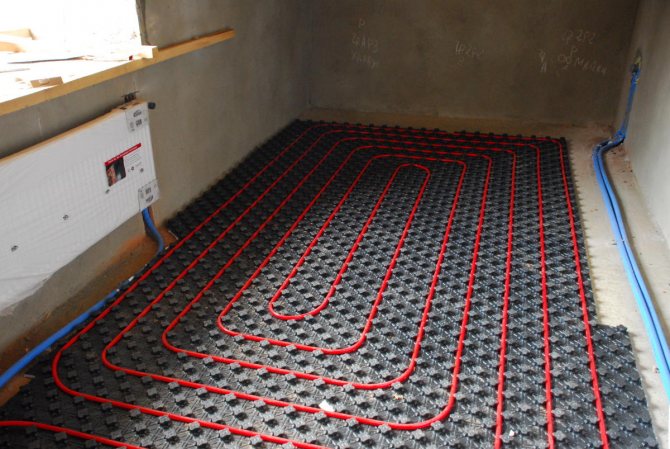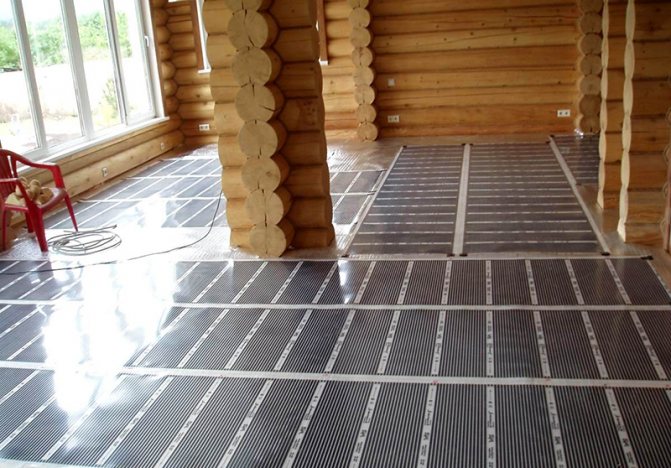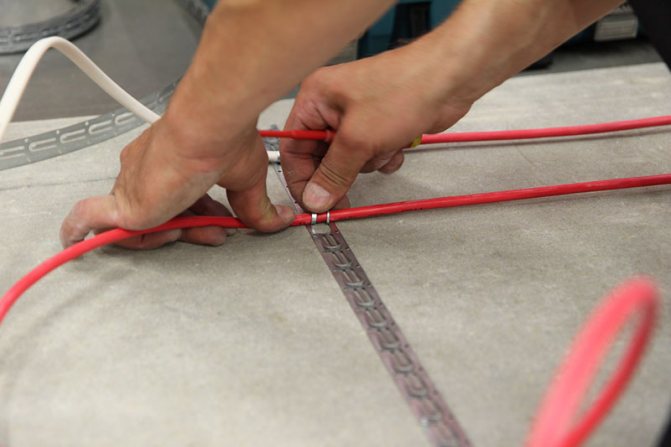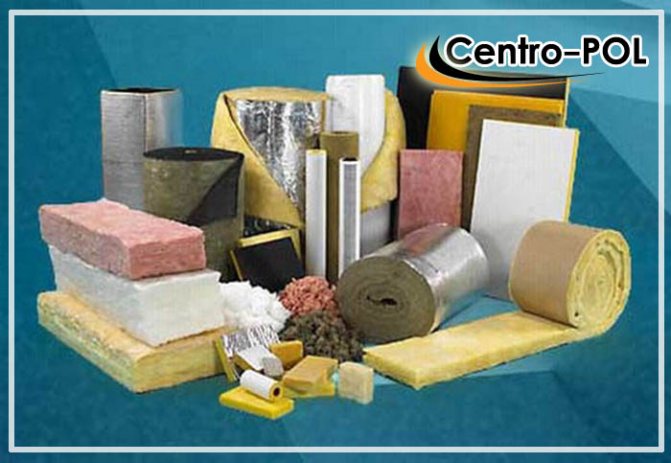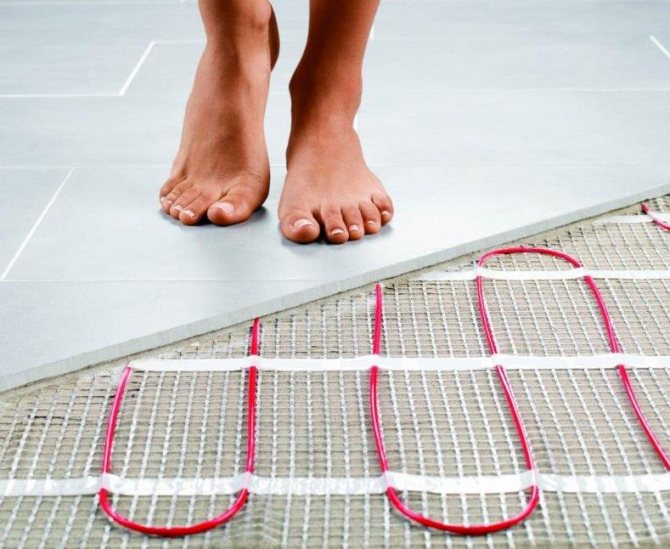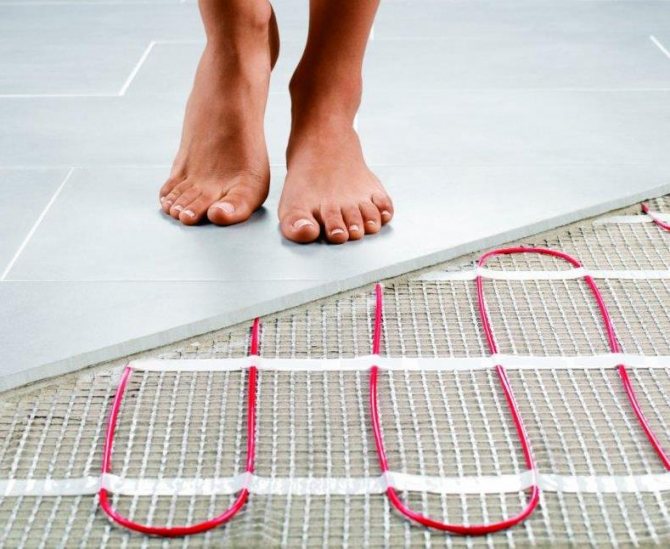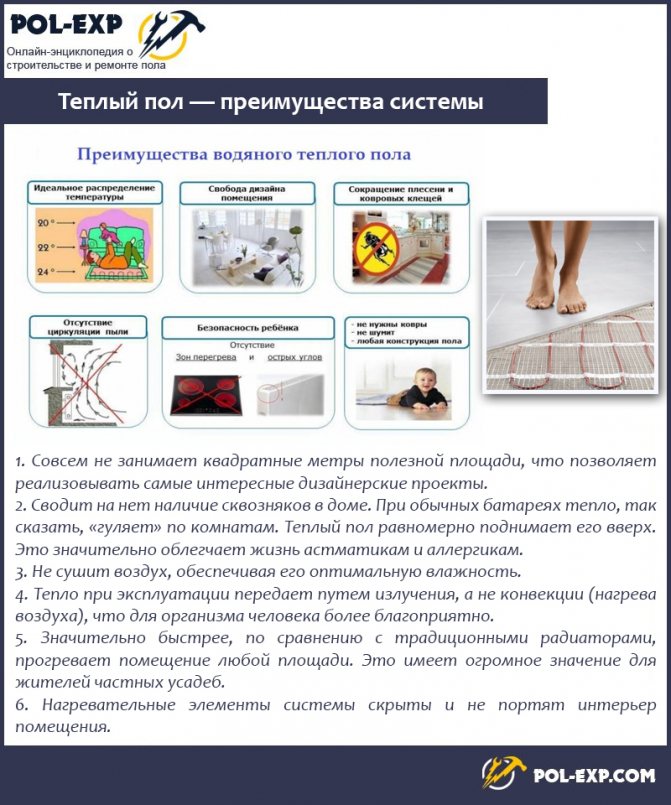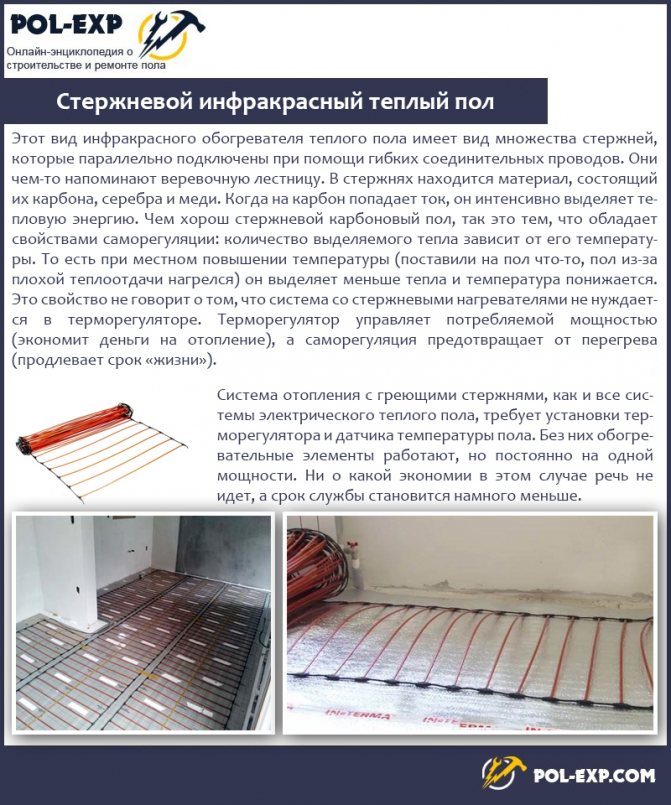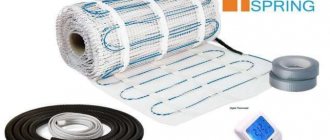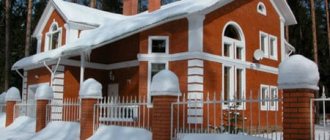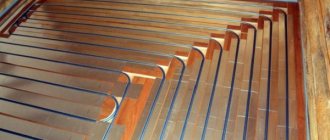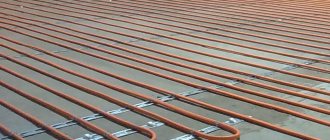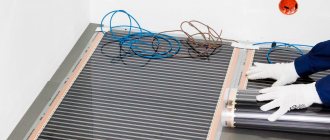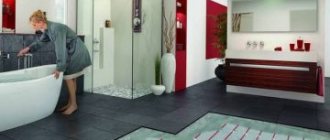Dacha is a meeting place for family and friends, an area of rest, peace and unity with nature and your dreams. Whatever the size, scope, style and features of your dacha, it should be comfortable to live in and cozy, which means you need to learn how to insulate the floor in the dacha so that it is pleasant to be inside.
Starting in autumn, cold weather comes to us, at first slowly, appearing only at night, and then more and more distinctly, reminding us of the first frosts. The winter period can completely surround the house with a veil of snow elements, and spring prepares streams of melted snow and temperature drops. All these influences are directly reflected in your home, its surface and internal microclimate. Insulation of the floor in the country will allow you to keep the dampness and cold on the way to your rooms, keeping the temperature inside, preventing the appearance of dampness, mold, condensation. Such work will not only improve your life in this house, as numerous reviews say, but also keep the structure itself - walls, floor, ceiling - in good condition, which will allow you to use the house for a long time without carrying out repairs and restoration work.
Waterproofing layer
The first encounter with low temperatures occurs in the basement - the place where the foundation passes into the subfloor. It is here that it is worth making waterproofing and insulation, if you do not want to then deal with the consequences of floods and dampness. The waterproofing procedure involves laying an impregnating layer or roll film. You can use special mixtures for pouring the floor, which will reliably protect against moisture, it is very convenient. Roll coating is applicable only for perfectly flat walls without cracks, moreover, they must be dry, so it is better to work in the hot season.
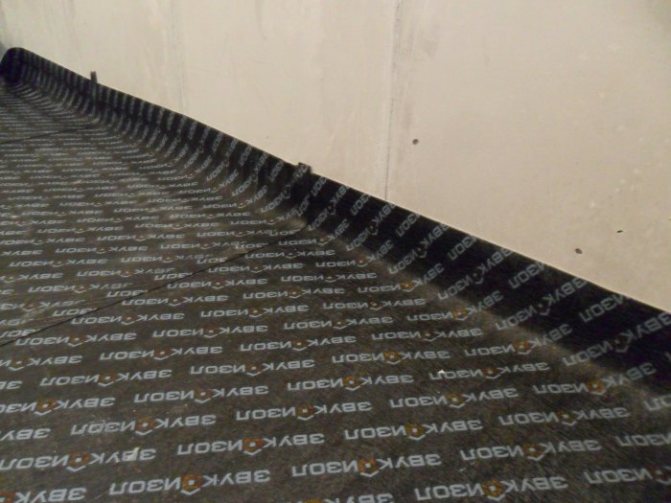
The floor in the country is most often concrete, because this material is the most durable and comfortable, therefore it will become your basis. Before carrying out any kind of work, it must be cleaned of dirt and dried. Mold stains or other growths must be removed. If the room goes underground, waterproofing should be done along the perimeter of the walls, since water will rise along their entire height, especially during the period of snow melting.
General work procedure and materials-insulation
To organize the floors in the country with your own hands, you need the correct sequence of actions. First you need to prepare the subfloor - this is the base surface that remained after the work of the builders. A layer of insulation is built on it, which is selected individually, and already on top of it a final floor covering is mounted. At each stage, it is important to follow the technique of performing work so that moisture and dust do not accumulate between the layers.
Sorry, no results were found.
Floor materials for summer cottages have long been tested in practical use and have been selected for construction sales. Polyfoam is a material made from polymer, it has a low density and good thermal insulation properties. This material can be used in sheets, blocks or as loose filler. It is light enough, so it needs to be firmly fixed. Underfloor heating in the country can also be made using expanded polystyrene. This is a more expensive material. There is also its liquid form - penoizol, it can also be used. Mineral wool insulation is used less often, as it can sag over time, forming gaps.
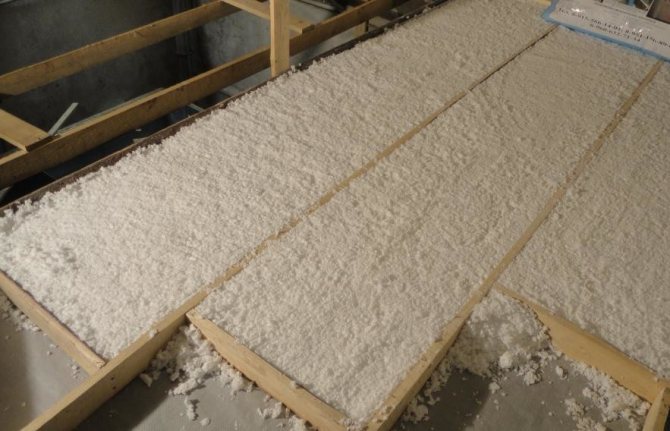

Penoizol.
What material to choose
The choice of insulation is determined by several criteria:
- material capabilities of the owners of the dacha;
- the complexity of styling;
- durability;
- resistance to moisture and rodents.
The last point is especially important, because if the owners live in the dacha only periodically, dampness and mice are the main reason for the destruction of floors.
The range of heaters is wide, and along with modern ones, many summer residents willingly use the already familiar, time-tested materials. With a limited budget, you can pick up several acceptable options.
Expanded clay - lightweight porous granules perfectly retain heat, mice and insects do not start in them, the material does not emit harmful vapors. For effective thermal insulation, it is necessary to provide reliable protection against dampness and to fill in expanded clay with a thick layer - up to 30 cm.


How to easily identify high-quality expanded clay
Wood shavings and sawdust are cheap and environmentally friendly materials that can be purchased at any woodworking enterprise. The shavings retain heat well, but are afraid of moisture, so they also need high-quality protection. In addition, insects and rodents can start in it.
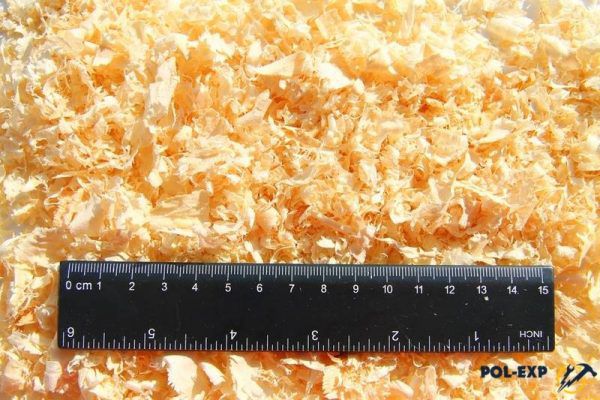

Sawdust and shavings
Slag is an affordable and practical way of warming on the ground. He also needs waterproofing, but he is durable, non-combustible and mice will not start in it.
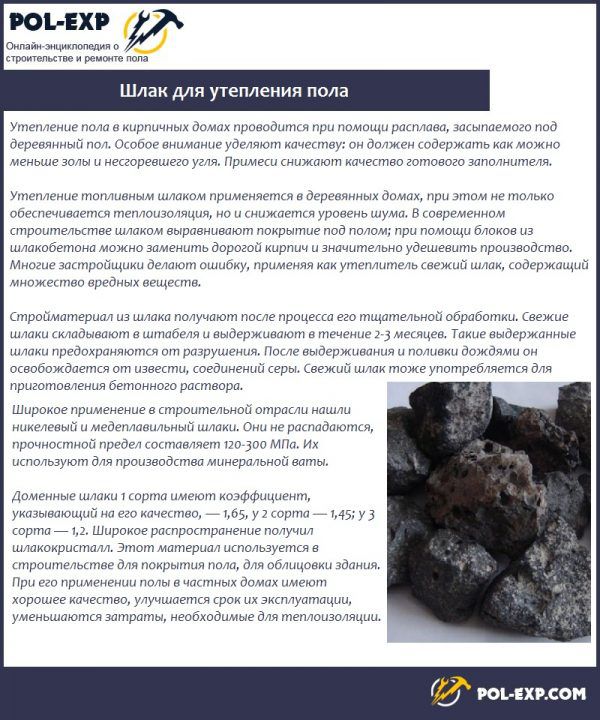

Slag for floor insulation
Glass wool - affordable, perfectly retains heat and drowns out sounds, is not damaged by insects or rodents. The disadvantages include the tendency to shrinkage and the need to use protective equipment during installation, since thin fibers are very fragile, easily penetrate the respiratory tract, and irritate the skin.


Glass wool
Polyfoam - easy to lay, moisture resistant. It has a long service life, but in the absence of mice, since these rodents are very actively destroying it.
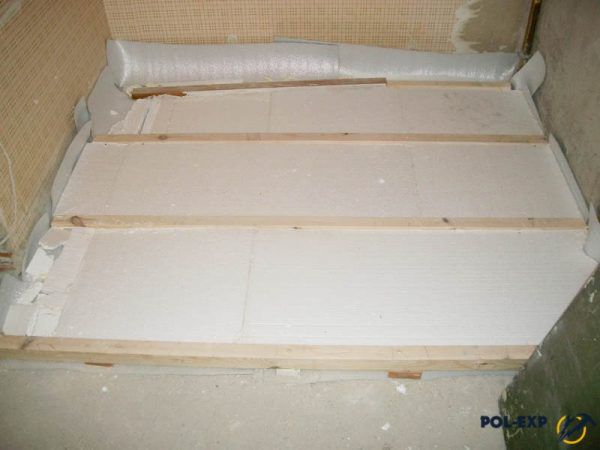

Floor insulation with foam
The use of modern materials gives an incomparably better result: installation is carried out with minimal labor costs, the effectiveness of insulation increases significantly, you can forget about repeated repairs for at least 20 years. The only drawback is the high price, but financial investments are fully paid off in several years, thanks to significant savings on heating the home.
| Material | Basic properties |
| Penoplex | EPSP boards are not afraid of moisture, temperature fluctuations, freezing, and due to their high density and special structure, they perfectly retain their shape throughout the entire period of service. The insulation is light, besides, the plates have a convenient connection system, so anyone can cope with the installation. |
| Mineral wool insulation | Produced in various modifications, they have increased wear resistance, less hygroscopicity, and last longer. There are mats and slabs with a foil coating that reflects heat and increases the efficiency of thermal insulation at times. |
| Polyurethane foam | The sprayed insulation forms a dense and seamless insulation layer, resistant to any negative influences. Due to the porous structure, the insulation does not exert large loads on the foundation and floors, and is excellent for thermal insulation of floors on the second floor, attic and attic. True, spraying requires a special installation, as well as skills in working with it, so it is problematic to insulate the floor yourself in this way. |
| Ecowool | Cellulose insulation with very low thermal conductivity. Environmentally friendly, has high sound insulation properties. The insulation is blown into the underfloor space using the installation, since it is quite difficult to evenly distribute and compact the layer manually. |
READ MORE: Infrared underfloor heating under the laminate: advantages and features of installation
rockwool mineral wool
As a bulk insulation, many use expanded vermiculite - a granular material with a scaly structure. It is lighter than expanded clay and retains heat better, and serves as excellent sound insulation.Unlike EPS and mineral wool, vermiculite is completely environmentally friendly, but at the same time it is not affected by fungi, putrefactive bacteria, insects and mice do not live in it. Well, the disadvantages include only the high cost, which is why vermiculite is inferior in popularity to cotton wool insulation and polystyrene.


Expanded vermiculite
Sawdust and shavings
Glass wool
| Penoplex | EPSP boards are not afraid of moisture, temperature fluctuations, freezing, and due to their high density and special structure, they perfectly retain their shape throughout the entire period of service. The insulation is light, besides, the plates have a convenient connection system, so anyone can cope with the installation. |
| Mineral wool insulation | Produced in various modifications, they have increased wear resistance, less hygroscopicity, and last longer. There are mats and slabs with a foil coating that reflects heat and increases the efficiency of thermal insulation at times. |
| Polyurethane foam | The sprayed insulation forms a dense and seamless insulation layer, resistant to any negative influences. Due to the porous structure, the insulation does not exert large loads on the foundation and floors, and is excellent for thermal insulation of floors on the second floor, attic and attic. True, for spraying, a special installation is required, as well as skills in working with it, so it is problematic to insulate the floor yourself in this way. |
| Ecowool | Cellulose insulation with very low thermal conductivity. Environmentally friendly, has high sound insulation properties. The insulation is blown into the underground space using the installation, since it is quite difficult to evenly distribute and compact the layer manually. |
Preparation for independent work on thermal insulation
To equip the floor in the country, you will need a basic set of tools. This is a screwdriver and a set of screwdrivers for working with self-tapping screws, a hacksaw for working with wooden beams, an office knife for shortening and trimming material. For measurements, you will need a tape measure and a building level. A furniture stapler is required to fix the insulation. For impregnation, you will need an antiseptic and a primer, as well as a brush to apply it. To organize the lattice for laying the insulation, you will need wooden beams or sheets that you can saw. For the top layer, finishing materials are needed. The calculation of the cost of floor insulation in the country can be done by measuring the footage of the room. Photo and video materials can help in the work, which will consider in detail each stage of the work.


Insulation of wood floor
Wooden floors are often worn out. If you bought a house or inherited it, you need to carefully examine its condition. It happens that a house, which is quite suitable in terms of decoration and layout, turns out to be resting on half-rotten beams. Perhaps the builders did not saturate them with a solution that improves the properties of the wood, and over time it became damp. If the floor is not suitable, you need to disassemble it. All boards must be torn off from the base in the form of an overlap of beams. It is time consuming work, but it has to be done.
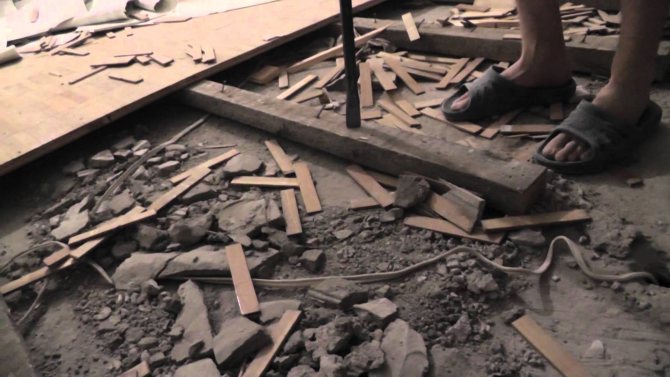

It is better to lay the floor in the country from new boards. It is better to fasten them with self-tapping screws, not nails. It is easier to handle and dismantle them. In addition, their fastening will not be a test for wood, since the hole can be shot down with a power tool. The boards should fit snugly together to keep air out of the basement or underground space. By the way, it can be filled with a metal mesh to prevent rodents from moving if they start.


A layer of insulation will provide a warm floor in the country. Install wooden logs around the perimeter of the floor - beams, between which the insulation will be laid. The distance between them can be from 40 cm to a meter.A vapor barrier film is laid on them, which is held together with a furniture stapler. It is better to seal up gaps or breaks. Attach the film to all folds so that it adheres to the joists and the floor. Both polystyrene and expanded polystyrene are suitable for warming floors in the country. Mineral wool is recommended as a joint and joint filler. Insulation blocks are easy to cut, crumble and fill up, so everyone can handle this job. The layer can be from 5 to 20 cm, depending on whether you plan to live indoors in the winter.


The top layer will already become the topcoat; it can be laid from chipboard, wood panels, plywood. It is important here to level the base so that all the boards are, as it were, on the same plane. Between them, gaps are permissible, and even necessary, which will allow the material to expand and contract depending on humidity, in its natural mode. Fastening here should be done carefully so that there are no protruding screw heads or other irregularities on the surface. Such a floor in the country house will retain heat, which will be produced by a fireplace or convector, and will also maintain the temperature inside a little higher than that outside, even during your absence.
Pros of electric mats
What makes an electric underfloor heating so popular in relation to a liquid low-temperature system when it comes to a small country house or summer cottage?
Firstly, the simplicity of selection, installation and adjustment of this type of heaters. Unlike a liquid system, you don't have to worry about tight connections or deal with pipes and fittings.
Secondly, the ability to do without a central heat generator, a boiler, with the help of which the entire liquid heating system is heated. In this regard, electric underfloor heating can be compared to a heating system with electric convectors, each of which has its own control unit and a separate power line.
So in the case of an electric underfloor heating, you have the opportunity to set its own temperature for each individual room.
Thirdly, when laying electric mats or cable floors, you can do it yourself, do it yourself. Naturally, you must understand how the installation of a cable floor or installation of electric mats is carried out, and follow the rules of electrical safety.
And finally, the main thing. Systems that do not use liquids in the process of heating a room have practically no alternatives when it comes to a country house or summer cottage with seasonal living. If you come in winter only on weekends or on holidays, then you have to drain the coolant from the heating system or use anti-freeze compounds. In the case of electric convectors, floors, cable or air systems, you are relieved of these hassles.
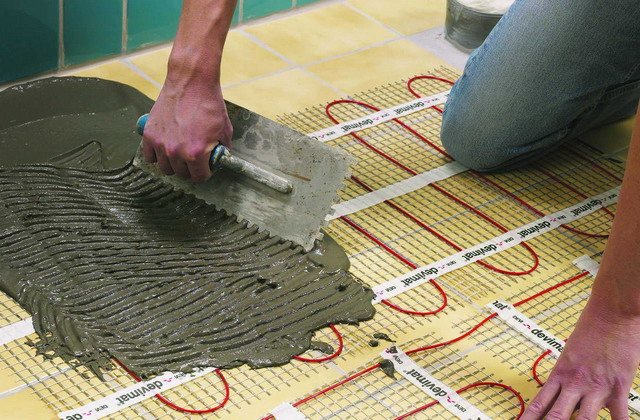

Concrete flooring in the country
The specificity of floor insulation in a country house with a concrete base allows several methods of insulation. The former resembles working with a wooden floor, while the latter is only suitable for a concrete base. So, floor insulation with the help of a film and layers of heat-insulating material in the country can be done by hand. The film is laid in one layer, its footage is easy to calculate. In this case, preliminary work is necessary - sealing cracks and chips with a cement screed and putty.
After the surface dries, a wooden frame is adjusted to it. The distance between the beams is at your discretion, but it is better that it be no more than 80 cm. A film is covered on this base and fixed with a stapler. The space between the beams is filled with heat-insulating material.
Its thickness may vary, but it is worth considering that a small gap is required between this layer and the upper floor covering, that is, the height of the log should exceed the height of the insulation layer by 0.5-1.5 cm.
The second option for the floor in the country is a little more interesting. First, the floor is leveled with a putty or screed. Next, you can lay a layer of roofing material for additional insulation. Insulation is laid on it - always in the form of slabs. They stick together to form a single layer. Filling with a screed holds them together completely. After it has dried, the flooring is laid according to your preference.
Warm floor using technology
Those who wondered how to insulate the floor in the country have probably heard about "warm floors" more than once. It is carrying the heating system under the surface of your floor. For this purpose, a cable or flexible tubes through which water is driven can be used. The heat source can be any heating boiler - gas or electric. Such a system is laid on top of a layer of insulation, distributed under the entire floor, in the form of a circular or parallel fastening of wires or tubes. Such heating will help you feel comfortable and maintain the air temperature in the room. In this case, experts will better tell you how to make the floor in the country.
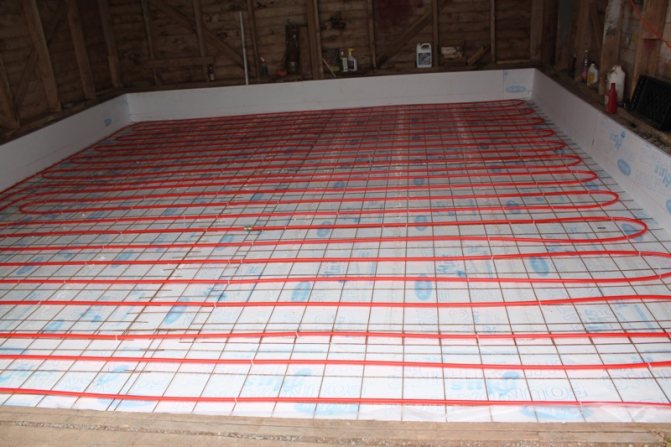

The floor in the country house creates the atmosphere. It is one thing when you can safely walk on it in socks, or even barefoot, sit on the carpet in the evenings, allow children to fiddle with toys on the floor, and quite another thing when it is icy and any contact with it threatens only with a cold. Not so many materials are needed for the floor in the country, and working with them is simple and straightforward. Having settled in a new house, or deciding to spend the winter outside the city, be sure to remember about the arrangement of the house, because its most vulnerable places are the floor and roof. The insulated floor in the country will save money on heating and subsequent repairs, so be sure to carry out all the necessary work. They can be done year-round, unless your sub-floor is damp.
Real heating with electric floors
The most reasonable option, how the heating of the house with an electric floor can be equipped, is to use a cable electric floor. In this version, you have the opportunity to supply a much higher electrical power to the heating device and, accordingly, receive a higher heat output at the output.
Naturally, all equipment and controllers in this variant must be used with a higher maximum power.
